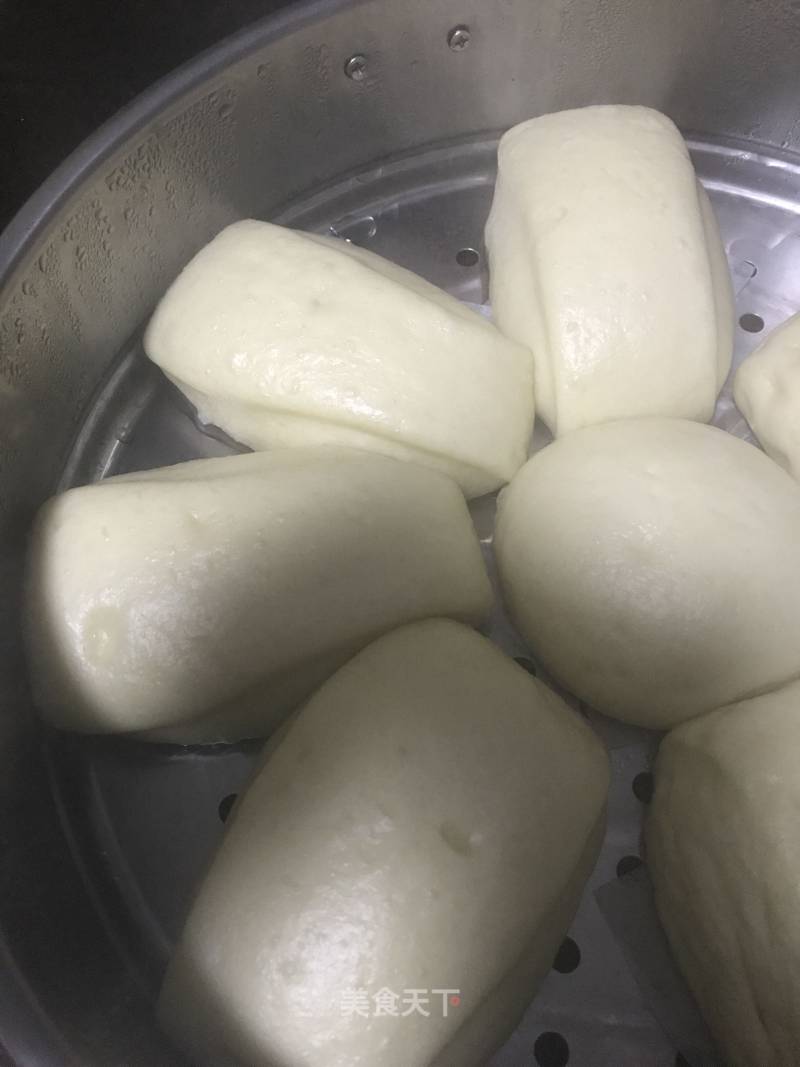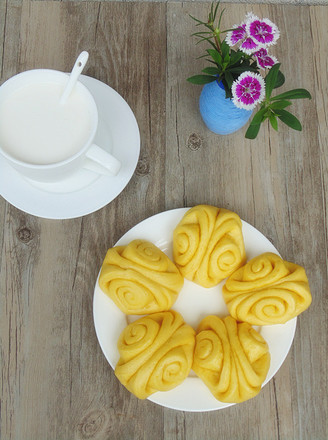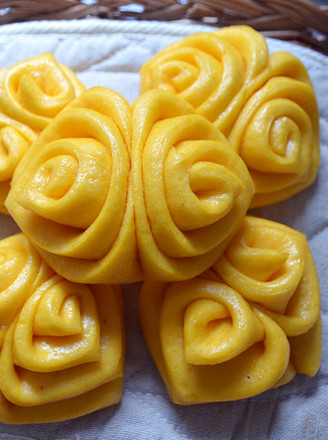Steamed Bread
1.
Add 5g of Angel Yeast to 300ml of 30-35°C warm water (drop a drop of water on the back of the hand, it will not be cold or hot), add sugar and stir to melt. Let it stand for 5-10 minutes to fully ferment.
2.
If you like sweetness, add some sugar to the flour.
3.
Add 2g of baking soda to 500g of flour (a little bit of baking soda is fine, and the buns will turn yellow when they are cooked, and the taste will be too alkaline. Adding baking soda is to prevent the flour from becoming sour during fermentation. In fact, it is the principle of acid-base neutralization. .)


4.
Add lukewarm yeast water to the flour, add in several times, add a little water to shake the stirred flakes aside, and add another little water. In this way, the bottom layer of the flour also forms snowflakes (because I hate the stickiness of the flour, I use a rice spoon to complete this step). Then combine the snowflakes into a ball with your hands. Then start to knead the dough (knead the dough like undressing, knead a few times and drop it a few times. If the dough dries during this process, just dip your palms in water and continue to knead. Don't add water to the dough at once, even if you think it will Let the dough become sticky.) Continue to knead as soft as possible until the "three light" (face light, pot light, hand light)


5.
Cover the dough with a dry cloth (as for the dry or wet cloth, it depends on the dryness or wetness of the fermentation environment. If the fermentation environment is wet, use a dry cloth) to ferment. In the southern part of the winter, I put a pot of hot water in the oven (about 80 degrees) and turn on the oven at 180 degrees for 3-5 minutes to increase the temperature and humidity, and then turn on the oven for 1 minute to let the temperature drop down so that the noodles will not be cooked. . Put your hand into the oven and adjust the temperature of the oven to about 35 degrees for 120 minutes. Ferment. The length of the fermentation time depends on the temperature, and the final fermentation success depends on the fingers sticking the flour into the dough without rebounding, and the dough has a good fermentation smell.


6.
The fermented dough uncovers the fine and even honeycomb structure inside. Sprinkle a little flour on the chopping board and knead it into a ball again with a rubbing technique to exhaust air. Because the dough will form gas during the fermentation process, if it is not fully eliminated, it will leave holes in the steamed buns. Affect the appearance and taste. The dough after the second kneading is soft and chewy.
7.
Knead the long strip, the thickness determines the length of the steamed bun. Then cut into segments. Sharpen the knife as fast as possible and move the knife as quickly as possible. The cut surface is even. This is a rectangular steamed bun. Two irregularly shaped doughs can be kneaded together to form a round steamed bun. The round steamed bun technique can be pressed inward, that is, the index finger and the middle finger are pulled in, and the thumb is pressed down, and the process is repeated until the noodles are rolled into a round ball. Namely round buns.


8.
Add hot water to the steamer and put greased paper under the steamed bun to prevent sticking (I bought a roll of greased paper and cut it into small sheets). Keep the steamed buns in the lid of the steamer for a second proofing for 20-30 minutes until they reach twice the size of the original embryo. At this time, the temperature of the water in the steamer is basically cold, and then steam for 12 minutes after the high fire (the steamer is best not to have large drops of water vapor fall into the pot, it is easy to drip on the steamed buns and the steamed buns will become deformed one by one). Don’t open the lid halfway. Turn off the heat when the steamed bun has doubled again after 12 minutes. After 5 minutes of natural cooling, slowly uncover the lid. (If you open it immediately, the steamed bun will suddenly shrink and become hard when cold, which will affect the fluffiness. )


9.
The steamed buns are ready, and the method of steamed buns is basically the same. It's just that there is an extra process of making stuffing, rolling and forming.
10.
Fluffy, chewy steamed buns, the dough can be peeled up in one piece, slightly sweet, with the fragrance of noodles. Eat your own food, rest assured, and look comfortable.
11.
In order to speed up the fermentation of the dough, a little soda, beer, etc. can also be added to the dough for the first time. It can be fermented directly at room temperature when the temperature is high in summer in the south. Good pastry kneading and fermentation is the key. If you add too much baking soda, you can add some white vinegar to the steamed buns. In this way, the yellowed buns can be restored to white.




















